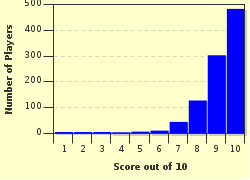Quiz Answer Key and Fun Facts
1. What band wrote and recorded the signature song "Friend of the Devil"?
2. What music legend wrote the classic "Like a Rolling Stone"?
3. "Born in the USA" is such a major anthem that Ronald Reagan used the recording as the theme song for his 1984 presidential campaign. Who's the artist?
4. What artist famously sang of shooting a man just to watch him die in "Folsom Prison Blues"?
5. What band wanted to rock and roll all night and party every day in the song "Rock and Roll All Nite"?
6. It's hard to say what song should be considered this band's signature song, but both "Yesterday" and "Hey Jude" are surely contenders for that coveted spot. What's the band?
7. One of the biggest disco songs of the 1970s, who sang "Dancing Queen"?
8. John Landis wrote and directed a music video to a song called "Thriller" that featured dancing ghouls and is considered the most groundbreaking video ever produced. Who sang "Thriller"?
9. What band broke into public consciousness with the 1967 hit "Light My Fire"?
10. "There's a lady who's sure, all that glitters is gold, and she's buying a stairway to heaven". So begins one of the most famous songs in rock history. Who sings "Stairway to Heaven"?
Source: Author
berenlazarus
This quiz was reviewed by FunTrivia editor
agony before going online.
Any errors found in FunTrivia content are routinely corrected through our feedback system.

